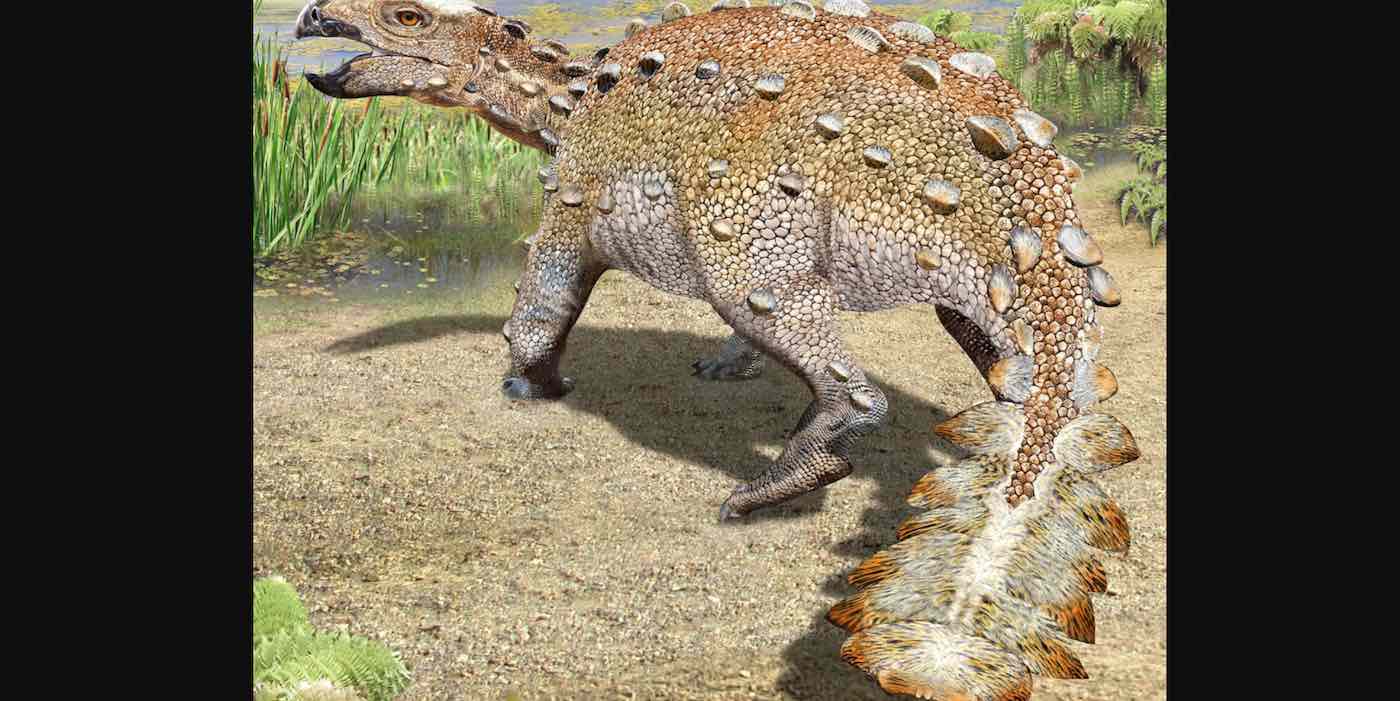
A unique, and entirely unprecedented specimen of ankylosaur has been discovered in southern Chile that has paleontologists throwing out the old textbooks.
The dinosaur famous for its hard, hammer-like lump of bone on the end of its tail and its scaly armored skin has a new cousin named Stegourus elengassen, which sports a flat section of bone on the end of its tail shaped like a cricket bat, surrounded by seven protruding frond-like blades.
Along with carrying totally unknown weaponry, the animal itself has cranial characteristics of a classic ankylosaur, but the pelvic and leg structure of a stegosaur, which the scientists who discovered it have used to base a new lineage of animals, separate from both, which inhabited the southern Gondwana supercontinent 72 million years ago.
Among the dinosaurs children grow up learning about, two closely-related genera are always present: the tail club-swinging ankylosaurs and the spikey stegosaurus. Both of these creatures lived during a time when theropods like T-Rex presented a ferocious predatorial danger, and so evolved unique tail weapons to defend themselves.
The new confusingly named fossil, Stegourus, looks more like ankylosaurus than stegosaurus. It was found in Patagonia where a river’s fine sediments had exquisitely preserved around 80% of the skeleton.
MORE: Map Lets You See How Your Hometown has Moved Across 750 Million Years of Continental Drift
It was in 2017 when a team from the University of Texas went down to Chile looking for dinosaur bones that they found some of particular interest in the Rio de las Chinas Valley. Passing a tip off to Alexander Vargas, a paleontologist at the University of Chile, Vargas went down the year after to investigate.
The bones, National Geographic reports, were lodged at the top of a steep hillside, and required them to be brought back to the lab in a plaster and stone block in sub-zero temperatures.
Careful cleaning revealed the tail blade, which was reminiscent of weaponry made by pre-metallurgical warrior societies like the Aztec or the Maori, who would fasten shark’s teeth or obsidian flakes to the edge of a sculpted wooden club, which the Aztecs, and thus Vargas, called a macuahuitl.
“The rest of the day, I was in shock,” Vargas told National Geographic of the discovery.
MORE: Dinosaur Unearthed in Argentina Could Be the Largest Animal That Ever Walked the Earth
Patagonia would have formed part of a supercontinent called Gondwana which consisted of South America, Africa, Antarctica, the Arabian Peninsula, the Indian Subcontinent, and Australia. Here only two armored dinosaur like ankylosaurus have ever been found—mostly cranial remains in Australia, and some small fragments from Antarctica which bear a striking resemblance to the obsidian-like tail blades on Stegourus’ peacekeeper.
Revealed in a recent paper in Nature journal, the scientists took the similarities between these three unique specimens, and the inability of them to be neatly fit into the lines of ankylosauria, to propose a new clade of armored Gondwanan dinosaurs called parankylosauria, including Stegourus, but not ankylosaurus or stegosaurus.
SHARE the Jurassic News With Your Best Buddies…




















